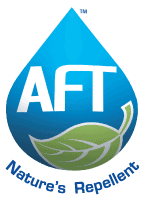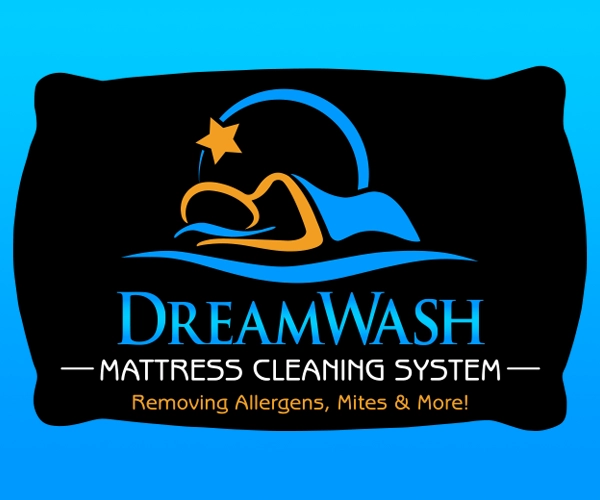How do carpet protectors work?
Do you know how Fluorochemicals work?
Dr. Aziz, PHD Chemist explains:
What are Fluoro Chemical Protectors and how they work.
The major soiling problems that occur with textiles are 1) staining and the reappearance of stains after cleaning, 2) the accumulation of dry, oily soil, and 3) the accumulation of wet or waterborne soil. All of these soiling problems occur to greater or lesser extent depending on the particular textile material being considered. For example, staining and the deposition of airborne and clothing-borne dry soil are particular problems with upholstery. For carpets, the accumulation of dry soil and muddy, wet soil from trafficking is a real problem. The use of fluorochemical protectors on textiles offers a highly desirable benefit to the consumer. They impart resistance to water- and oil-based staining, give resistance to dry and wet soiling, and provide cleanability.
Understanding basic terms
Before going further, understanding some basic terms will be useful. Staining is defined as the introduction of non-reversible change in the appearance of the textile caused by the presence or influence of a liquid; it takes place over part but not all of the surface. Changes in appearance may be caused by changes in the shade or in the intensity of the shade. Colorless, volatile liquids that do not solubilize the dye or finish elements evaporate and leave no visible signs of their presence. With such liquids, wicking causes no problems. However, nonvolatile liquids and liquids which are solvents for the dye or finish can cause stains. As these liquids are forced down between fibers, the degree of light scattering is reduced, and the shade of the textile darkens. Of course, colored staining agents produce changes in shade from both their own shade and this optical effect.
Stain repellency is the ability of the fabric to withstand penetration by liquid soils under conditions in which the liquid soils are not forced into the fabric by external forces, other than capillary forces (wicking). In contrast, stain resistance of a fabric is the degree to which a stained fabric can be returned to its original state by wiping or blotting the surface.
Dry soiling is defined as the gradual accumulation of oily particulate soil, borne by air or from contact with soiled skin or clothing. Dry soil resistance is the reduction of the adhesive force between the fabric and the oily particulate, reducing the accumulation of soil and improving ease of soil removal by vacuuming. A common fallacy is that a good oil-repelling fluorochemical will also show good dry soil resistance. This is not necessarily so.
What are Fluorochemical Repellents?
Fluorochemical repellents differ from silicone- or hydrocarbon-based repellents in several aspects, of which oil repellency is the most important. Fluorochemicals repel both water and oil, whereas repellents with silicone or hydrocarbons repel only water. Soil repelling requires low surface energy as opposed to high surface energy that is required for wetting. The ability of fluorochemicals is related to their low cohesive force (nonstick) and low surface energy bartier against wetting. Fluorochemicals for carpets are designed more for soil resistance than for water or oil resistance, whereas the ones designed for upholstery emphasize more oil and water repellency.
Chemistry of Fluorochemicals
All fluorochemical protector molecules consist of two parts: the fluorinated part and the non-fluorinated part. The fluorinated part, called the perfluoroalkyl group, is common to all fluorochemical protectors. The fluorinated part consists of carbon atoms linked to other carbon atoms forming the core; attached and surrounding each carbon atom are fluorine atoms forming a sheath. These fluorine atoms act like little umbrellas in a rain shower. Research studies in fluorochemistry have shown that the greater the number of fluorine atoms attached to the carbon atoms, and the more closely packed they are, the better the repellency. It has also been determined that the optimal number of linking carbon atoms is between 10 and 12 and that linked carbon atoms that are linear rather than branched give better performance.
The literature on fluorochemical repellents is very extensive, but most of it deals with the non-fluorinated part. Very few practical methods use the fluorinated part. Among the two known methods, 3M employs a electrochemical fluorination method and DuPont uses what is called telomerization to make the fluorochemical part. The fluorochemical part produced by either method is chemically attached with a non-fluorinated part which can be acrylic, vinyl or urethane. The non-fluorinated part, in addition to being an extender by lowering the cost of the fluorochemical, serves two other useful purposes: it forms a backbone to the fluorochemical making it more durable and acts as the glue to bond the fluoro-chemical part to the fiber.
How do Fluorochemicals work?
Fluorochemical protectors improve stain and soil resistance by lowering the surface energy of the fabric, i.e., they create a barrier. The fabrics are more difficult to wet, hence liquid stains will not spread or wick over large areas. Dry oils will not adhere as strongly. Keep in mind that fluorochemicals, or any other nonfilmforming material, cannot make a typically porous fabric completely impervious to oily stains, i.e., stain-proof under the most severe conditions. As long as capillary (wicking) action is the only driving force, the barrier resulting from the fluorochemical prevents both penetration into the fabric and wicking over a large area. Stains up on the surface of a fabric are readily removed by blotting. the spill or stain is being forced into the fabric and is water-based, it will usually be held out from significant penetration. If, however, the stain consists of certain oils, it may penetrate between yarns. This is because their surface tension is too low, and the stain will overcome the fluorochemical barrier. However, even when oily stains are forced into fabrics, the fluorochemical will prevent wicking. In addition, the fluorochemical enhances stain release during spot cleaning and soil removal. This is done by a) diffusion of water and detergent into the soil-water interface, b) decreasing the adhesion of soils to the fibers, and c) reducing soil redeposition during cleaning.
Factors affecting the quality of Fluorochemical Protectors
First and probably foremost among the factors essential to obtaining satisfactory protection from a fluorochemical is the concentration of the fluorochemical applied to the fabric. As a general rule, sufficient fluorochemical should be applied to cover 50-70 percent of the surface. Usually, from 0.1-0.4 weight percent fluorochemical solids (200-800 ppm fluorine based on the fiber weight) on the fabric will be enough to provide this coverage and give good repellencies and stain and soil resistance on the majority of carpets and upholstery fabrics. Most fluorochemicals are sold as aqueous dispersions, and the percent of active ingredient varies significantly between manufacturers. Following the manufacturer’s recommended levels is important. Within these limits, the higher the product loading, the better the end-use performance. Fluorochemical protectors are marketed as emulsions, dispersions or soluflons. The water-based emulsions or dispersions can be cationic, non! ionic, or anionic in nature. Just prior to the introduction of the stain resist-type nylon fibers, Du Pont switched from a cationic water-based fluorochemical dispersion to an anionic type, making it compatible with stain resist-type fibers. Use of cationic fluorochemical protectors will void warranties on stain resist-type carpets. For this reason, among others, they should not be mixed.
The geometry of the fabric surface is also an important consideration. Rough or smooth, flat or pile, will have an influence on the ultimate uniformity of the fluorochemical film. Normally, the flatter and smoother a surface is, the easier it is to treat. Treated level loop carpets are expected to be somewhat more soil repellent than cut pile carpets. Fabric preparation can be critical in obtaining good results from the fluorochemical polymer. For optimum repellency and most efficient use of the fluorochemical, the fabric should be as clean as practical. Many contaminates, such as surface or yarn lubricants, dyeing assistants, softeners, or surface-active agents, can adversely affect repellency.
Fluorochemicals can be applied by pad, spray or foam. Many upholstery fabrics are now treated by spray or foam. Certain fabrics cannot be treated effectively. In the case of high-pile, knit fabrics, application by pad, spray or foam gives significant fabric distortion and poor end-use performance. Additives used with the fluorochemical must be chosen carefully for compatibility. Softeners, lubricants and wax-type repellents can have a significant adverse effect on both repellency and dry soil resistance. Literature on fluorochemicals points out that the fluorochemical leaves a hard, durable film, so that it resists deformation when soil presses against it.
Most of the fluorochernical treatments on carpet are water-based, and the fluorochemical is water insoluble to provide durability when cleaning. To make it practical to apply, it is emulsified with various surfactants. Fluorochemicals are also available in solvent bases but are not the preferred method for treatments as the solvents can pose environmental and health hazards. After-market fluorochemical protectors sold as solvent soluble will show better oil and water repellency compared to the water-dispersible type, but will not be as durable when used on carpets and will not have the same level of dry soil resistance. It is also important that the fluorochemical tails be properly oriented outward to produce a low surface energy barrier. In the mills, it is achieved by heating to 2750F, which is the common cure temperature for latex backing. Since the dry/cure temperatures are not feasible after application of after-market protectors, mill-applied protectors will show better soil protection than after-market protectors.
Do Fluorochemical Protectors benefit all types of fibers?
A question that has come up from time to time is whether fluorochemicals benefit fibers other than nylon. Let us begin by rationalizing the situation, and then you be the judge. Many surfactants lower the surface tension of water from 72 to 30 dynesl cm at their critical micelle concentration levels (CMC). This lowering of surface tension is adequate to wet commonly used textile fibers having critical surface tension of 40 dynes/cm or higher. Therefore, oily soils could be removed from fibers with detergents. The surface tension of soiling oils is about 30 dynes/cm. Polytetra-fluoroethylene (used in nonstick cooking utensils) lowers it to about 18, and the fluoropolymer protectors can take it as low as 6 dynes/cm.
What does all this mean? When the fluorochemical is applied to a fiber, it lowers the critical surface tension from about 40 to as low as 6. This lowering of critical surface tension means the fiber cohesive forces are lowered (nonstick). Because of this lower surface energy, a barrier is created to wetting by both oils and water. You have created a fiber that will soil less and be cleaned with ease. Furthermore, the fluoropolymer contains nonfluorinated binders that will anchor to any type of fiber and make the finish more durable.
by Dr. Aziz, PHD Chemist
Sign up to get the latest Bonnet Pro News & Exclusive Special Discounts
Sign Up to Get the latest Bonnet Pro News & Exclusive Special Discounts
Pick the Best Products & Shipping Deals
Touch HereDiscover shipping specials & programs
Click here.
Order Our Sample Packs
.Super SAMPLE PACK
These discounted sample packs help you explore Bonnet Pro products. Become the legend in your town.
Must Have Proprietary Bonnet Pro Technology
Must Have Proprietary
Bonnet Pro Technology





